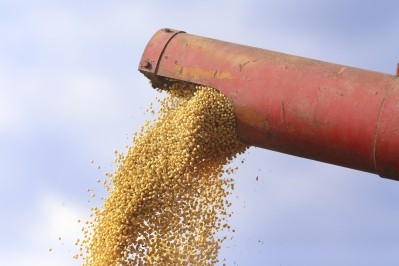USDA: Corn, soy hold steady as eyes turn to wheat quality

Details of feed crop ending stocks, exports and international production were included in the US Department of Agriculture’s (USDA) World Agricultural Supply and Demand Estimates report, which was released on Friday (June 9).
Overall changes in expectations and price for some feed grains like corn and soybean saw little domestic change, said Chad Hart, associate professor in the department of economics at Iowa State University and extension economist.
However, attention is focusing on export markets and the quality of the wheat crop, he said.
“We’ll watch the export market, we know South America is going to dominate that in the next few months,” he told us. “But can the US hold on to some of that to burn through ending stocks?”
Quality issues in the current wheat crop may offer a longer-term dynamic for the wheat market, he said. There have been some concerns for the winter and spring wheat crops, which could lead to an abundance of feed wheat being available.
Looking forward, there are several factors to follow including the ethanol market and corn use, weather, and the upcoming June 30 acreage report, he said. That report is expected to offer more information about how many acres needed to be replanted and if there was much shift in crops planted.
Corn and soybean movement
A drop in soy crush for 2016/17 is expected to mean increased beginning stocks for US soybeans, said the USDA. Crush dropped 15m bushels and ending stocks were raised by the same amount from last month.
Ending stocks for 2017/18 were raised to 495m bushels, the department said. But, price forecasts remain unchanged.
Global supply and demand points to increases in production and stocks, the department said. Production for 2016/17 reflects increased soy crops in Brazil and Argentina.
Beginning stocks were raised to 93.2m tons for 2017/18, the department said. Ending stocks for 2017/18 also were increased.
“We’re in that time of year now where we should see our exports fall off as the South American crop emerges and comes out on the market place,” said Hart. “That’s a pattern we see every year, and this year arguably that’s taken a little longer than usual.”
However, the export pace and overall demand for corn and soybeans has been fairly robust this year, he said. “Even if things were to completely stop today, we’d still be looking at the second best corn export year we’ve had and a top soybean market,” he added.
“So our exports are going to slow down, but we’ve had a strong to phenomenal year in terms of our grain exports,” he said.
Large crop yields have contributed to lower prices, but there has been consistent demand, he said. “Demand has been strong for a couple of years, and 2016/17 is going to turn out to be the strongest year that some of crops have had – [but] it’s hard to see that.”
Globally, corn production in the EU and Canada is expected to drop, said the USDA. But, production in the Ukraine, Brazil, for 2016/17, and South Africa has been increased.
Global trade forecasts improved corn exports for Ukraine and Russia and a rise in imports for the EU, the department said. Foreign corn ending stocks were lowered.
Wheat watching
Beginning stocks, production and imports have been increased for US wheat supplies for 2017/18, the USDA said. Wheat production was bumped to 1.8bn bushels.
Boosted production for hard red winter and soft red winter wheat is expected to offset a drop in white winter wheat production, the department said. Ending stocks have been increased by 10.8m bushels with carryout remaining 20% less than last year.
Supplies of high-protein wheat are expected to be limited in 2017/18 and likely will mean higher prices for wheat in the category.
Trouble with quality of the wheat crop, especially for spring wheat production could lead to increased prices in food quality wheat, said Hart. “As we start to see millers searching for higher quality wheat we’ll start to see the price, especially in the spring wheat varieties bubble up,” he added.
However, if that develops it may be able to influence planting decisions for 2018, he said.
“Wheat markets will be more aggressive in getting more land to fill that need,” he said. “We’ve watched the wheat acres drop to dramatically low levels and that might be the rebound of that.”
Global wheat supplies for 2017/18 have been increased by about 2.8m tons, primarily based on production in Russia, the USDA said. Turkey also is expected to see an increase in crop, while India and the EU are expected to see production drop.
Exports for 2017/18 are slightly higher based on increases from Argentina and Iran, the department said. Imports are expected to be up for Brazil, Chile and South Africa.
Total consumption also is down, the department said. Global ending stocks are forecast to be 261.m tons, an increase from last month.










